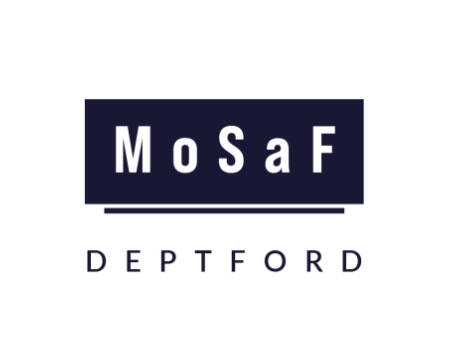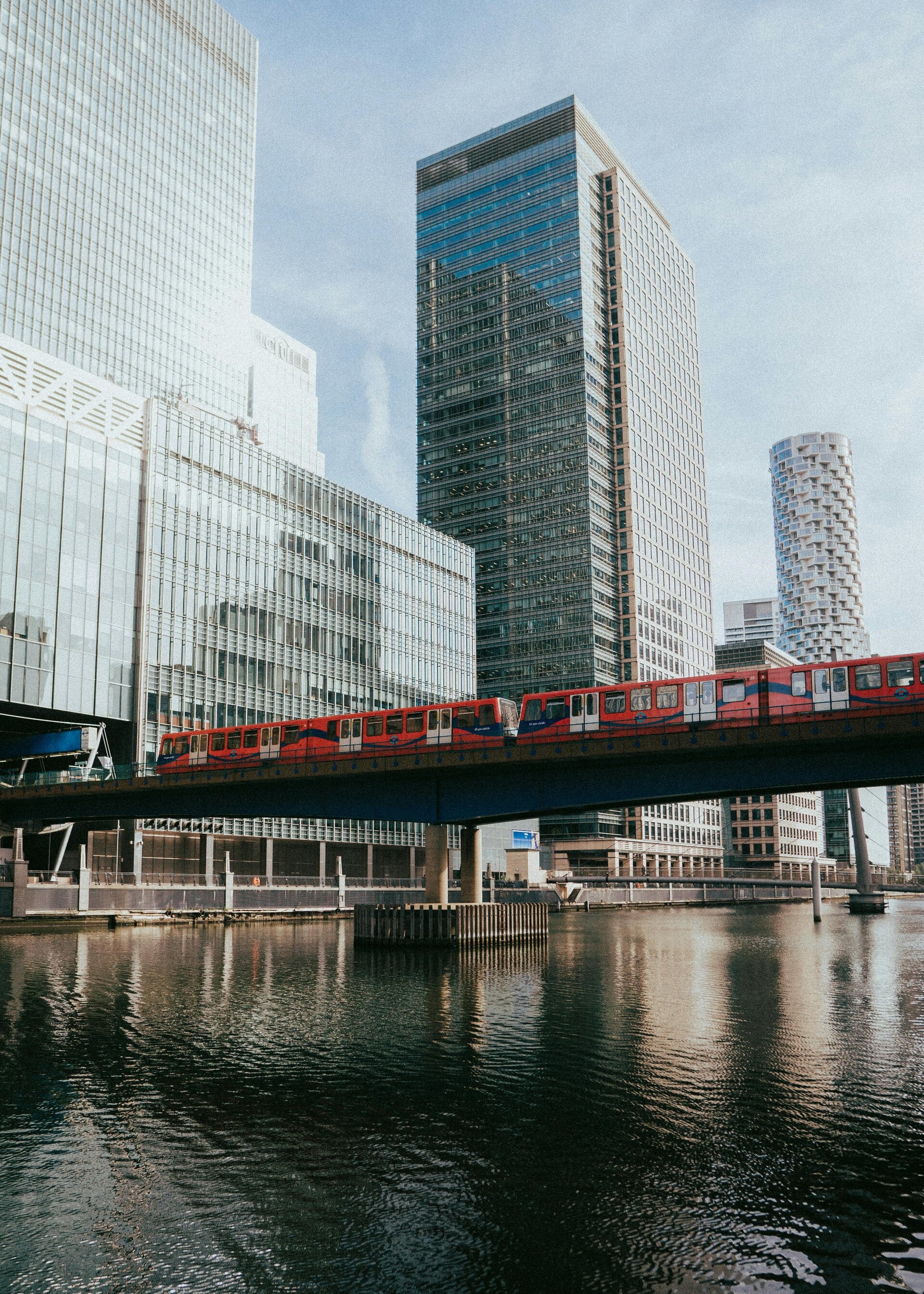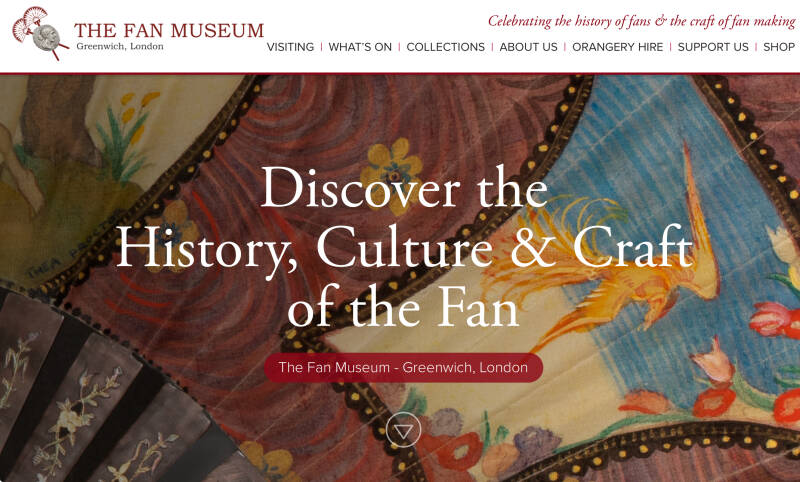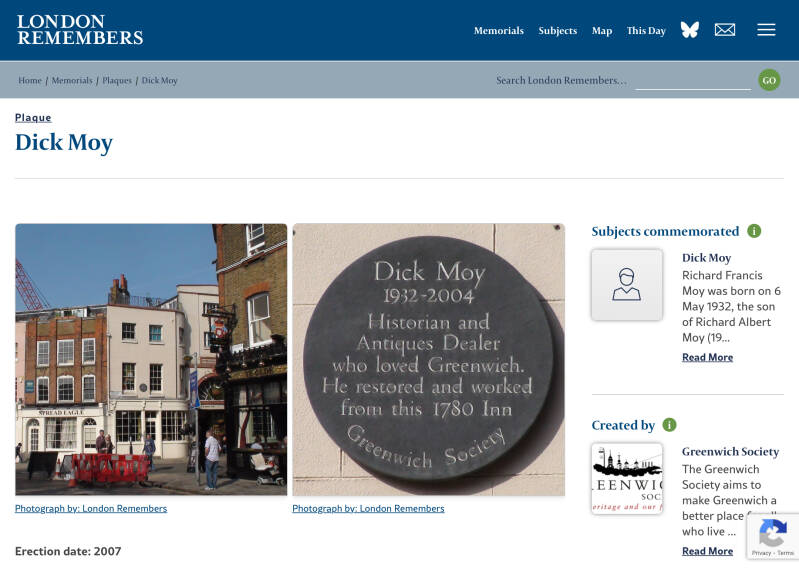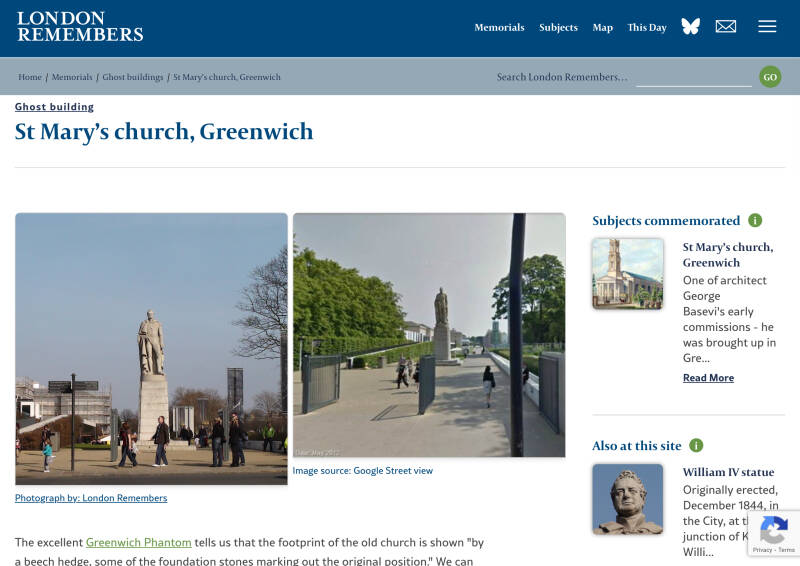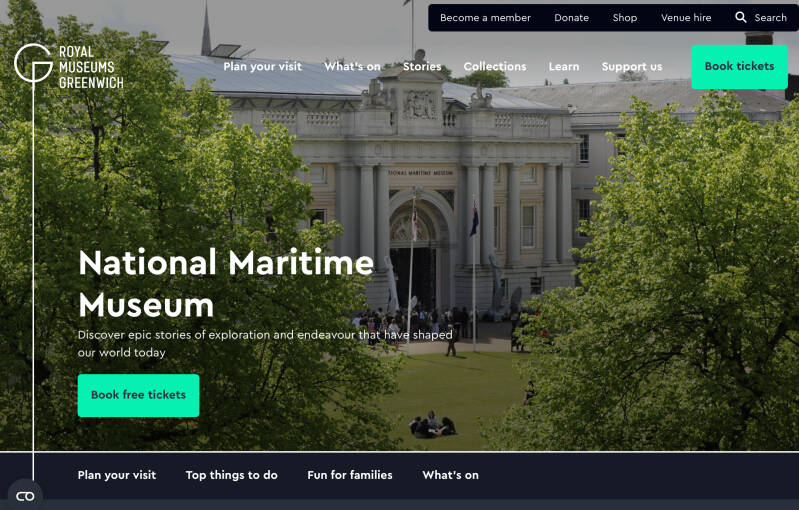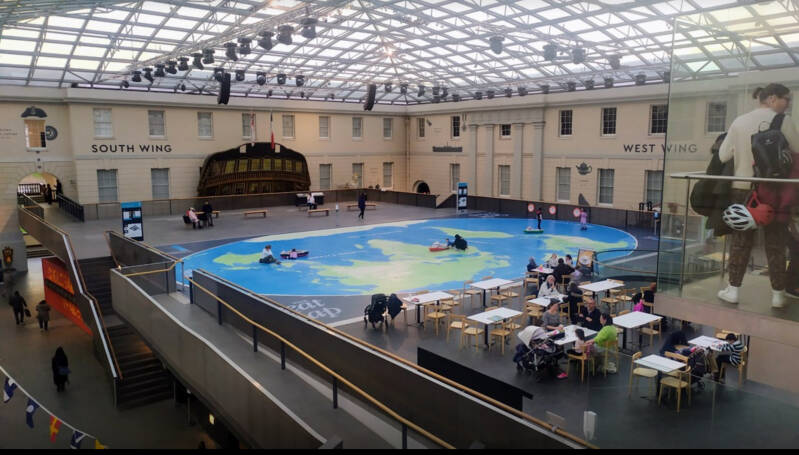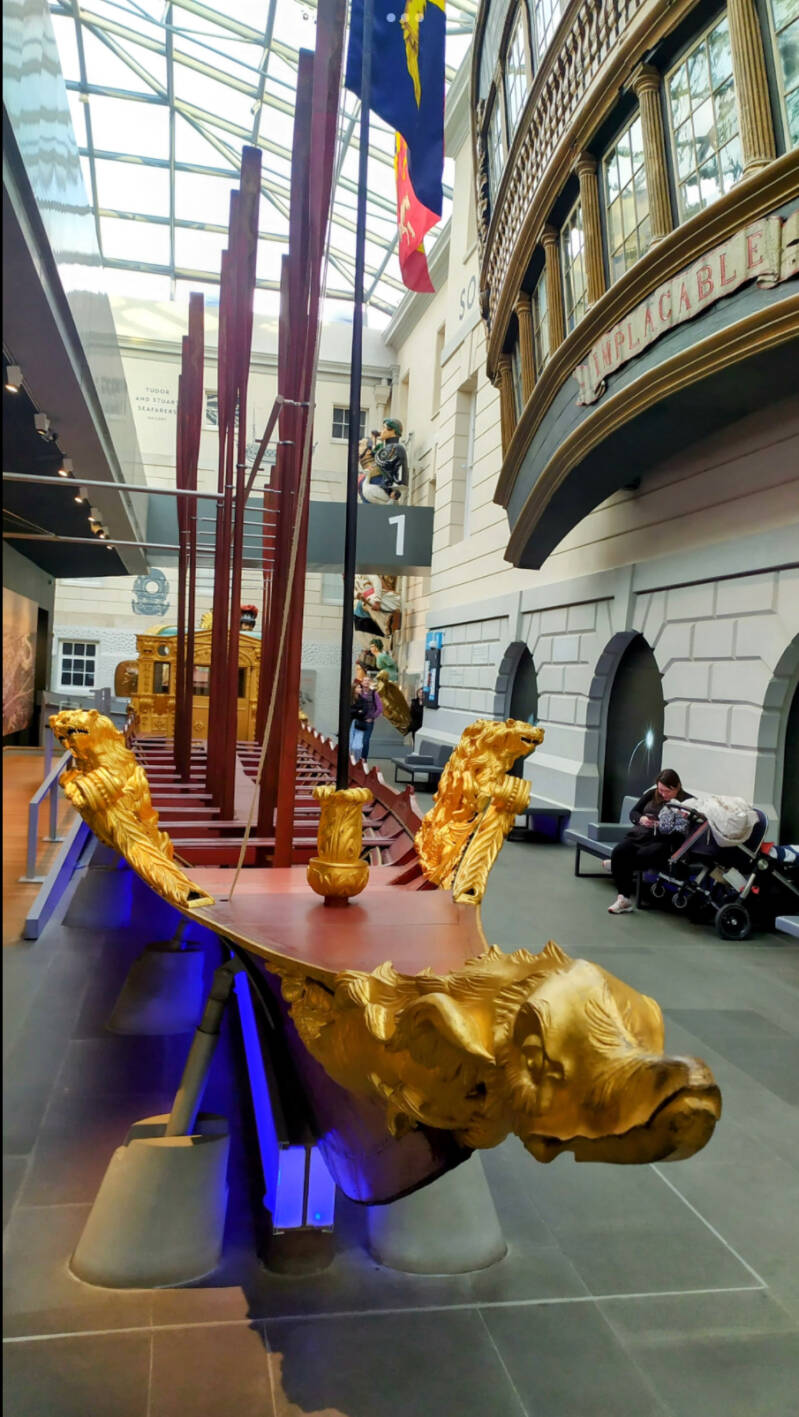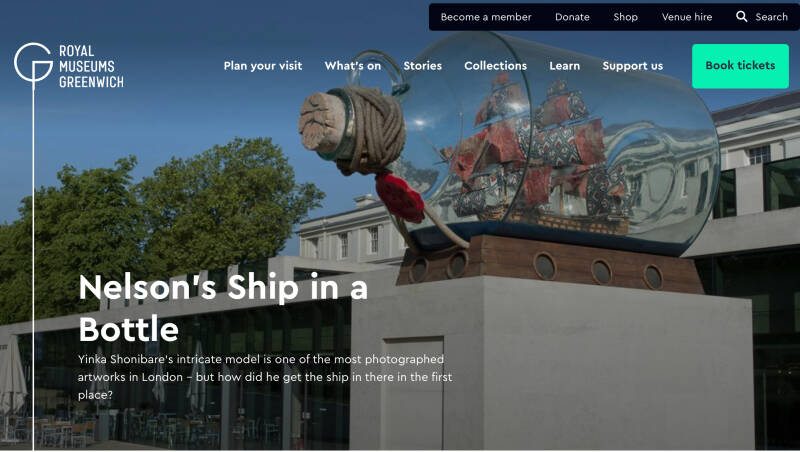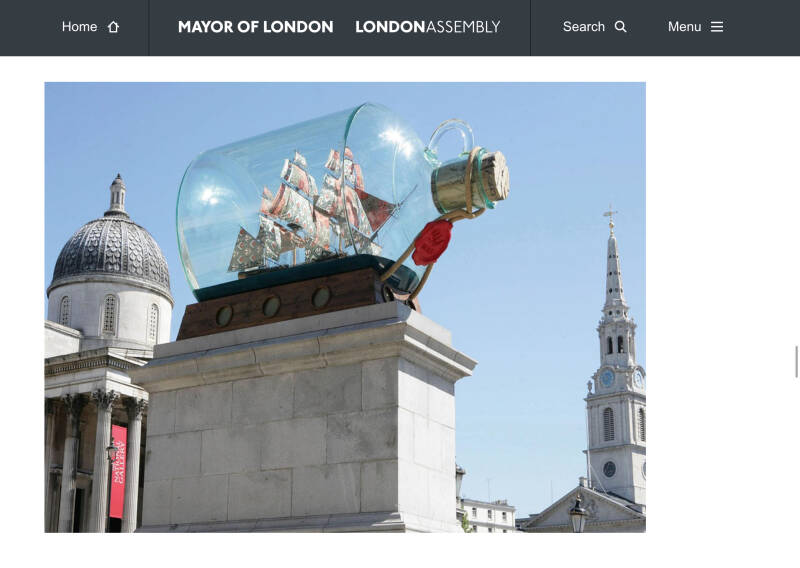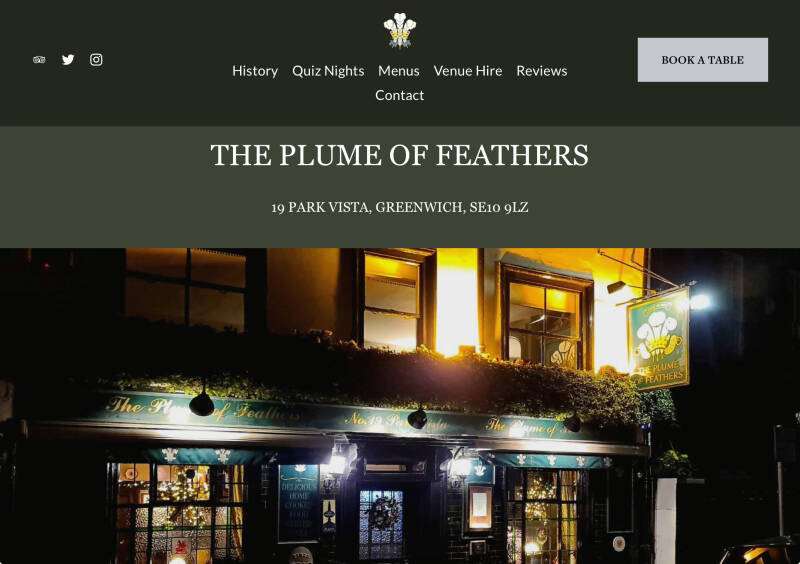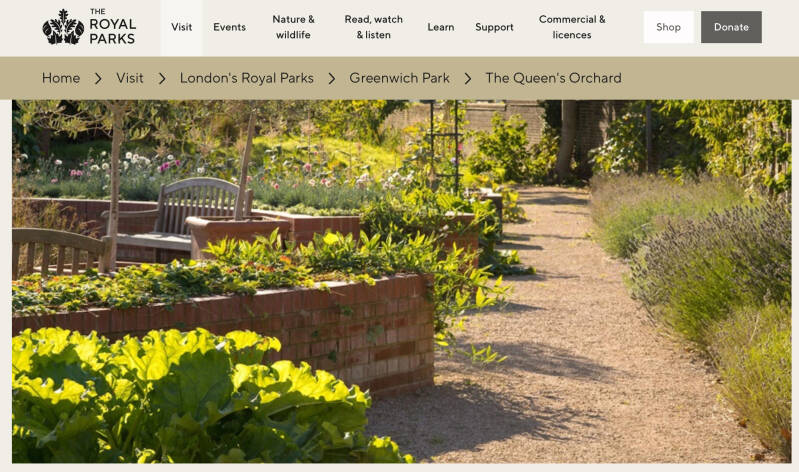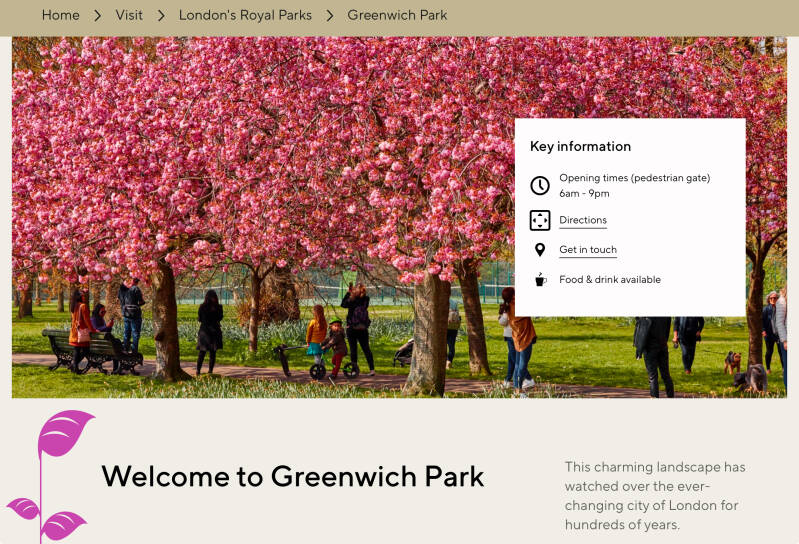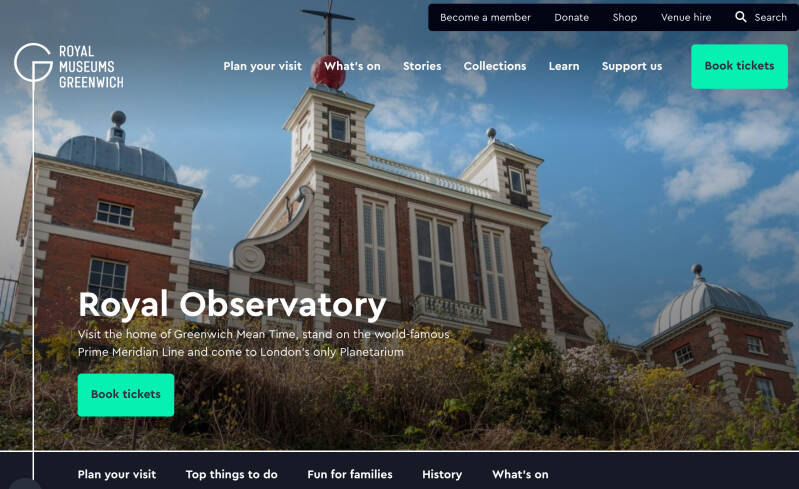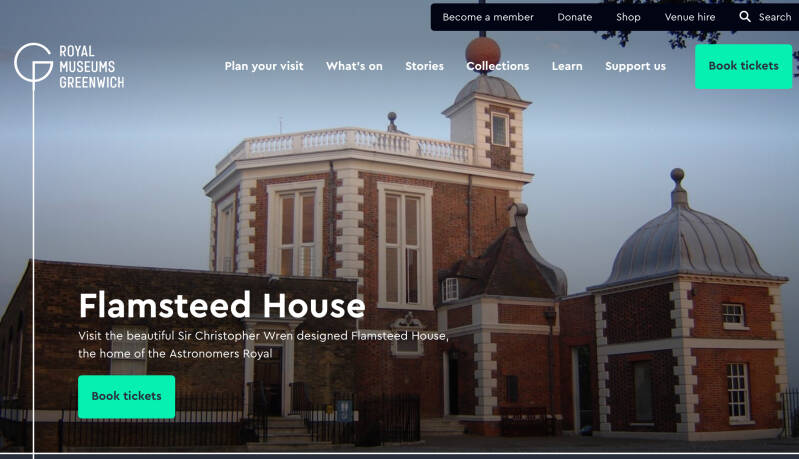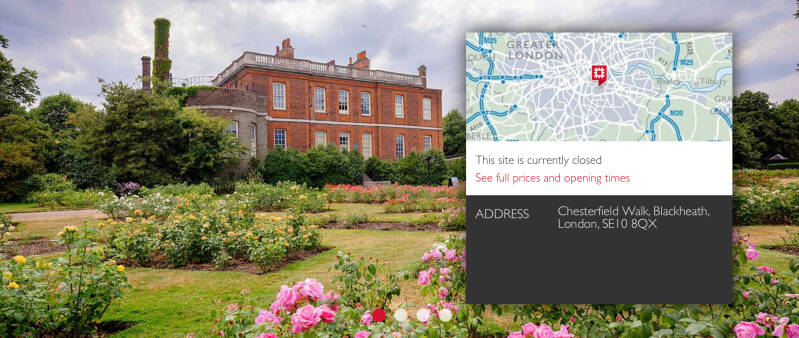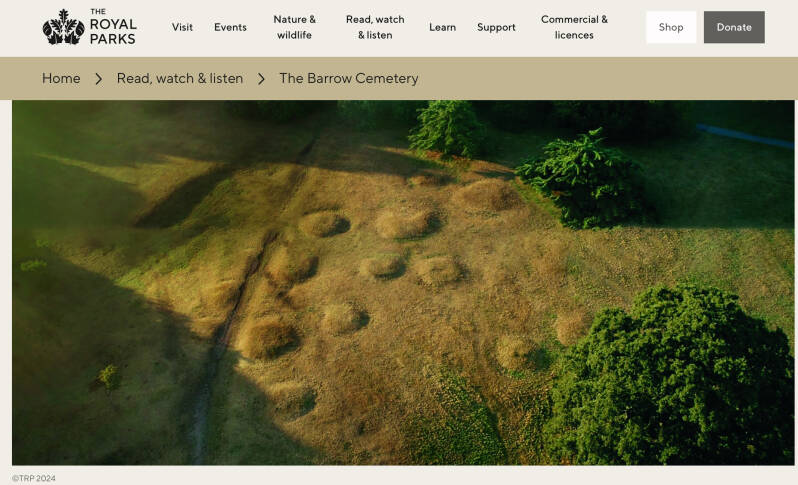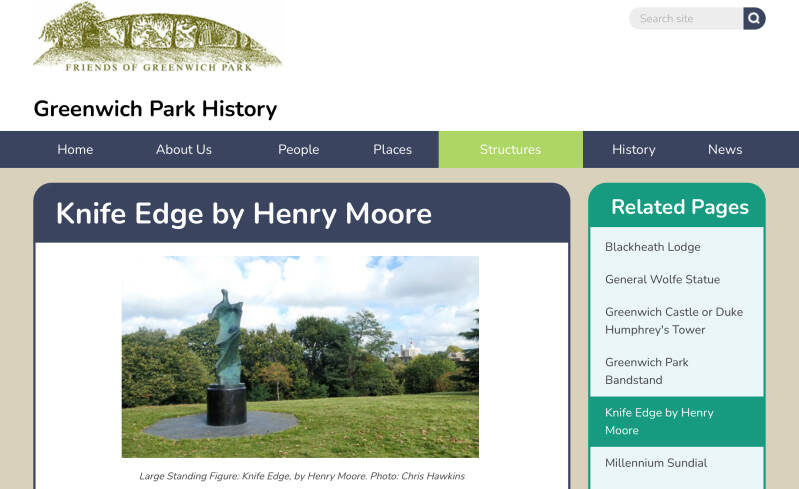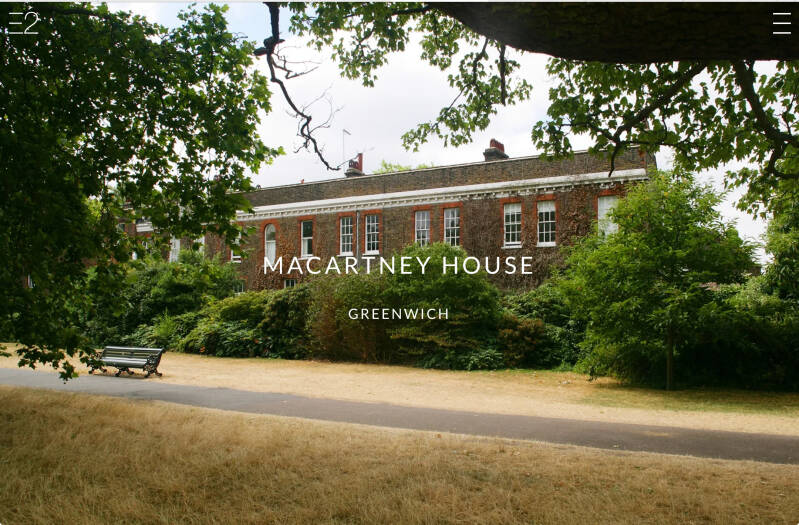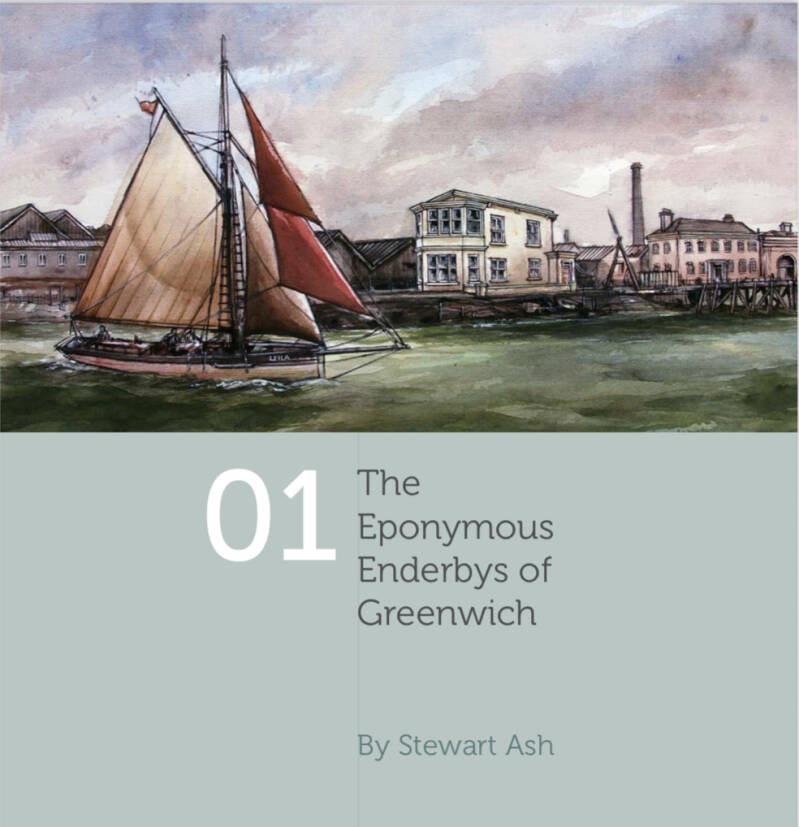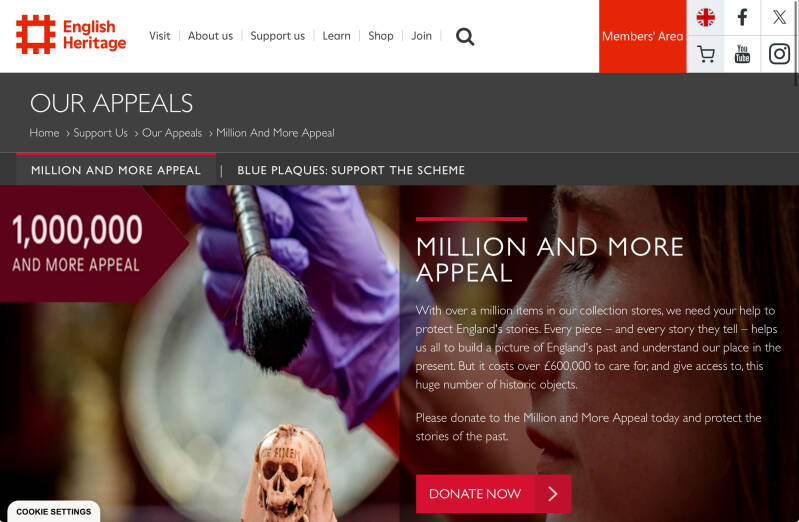GREENWICH TOWN CENTRE and the ROYAL PARK
In this chapter:
- Greenwich Market. - the NATIONAL MUSEUMS and the FAN MUSEUM
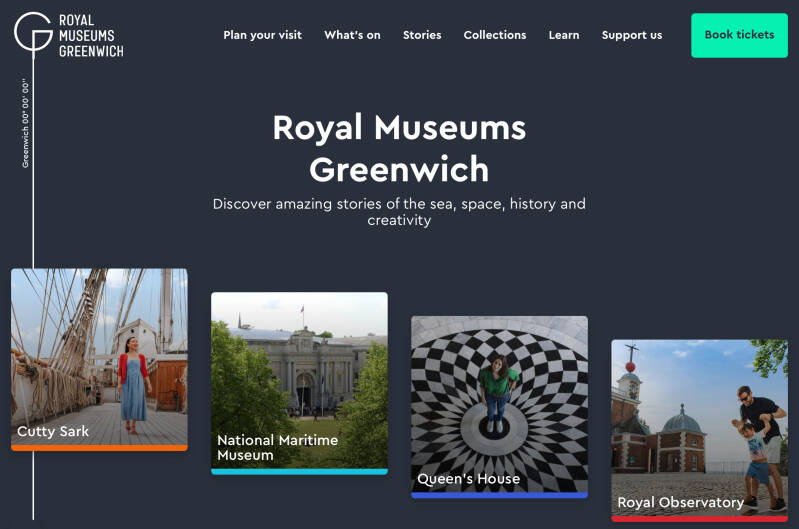
- the Royal Park
- HAMILTON HOUSE, West Grove - DARTMOURTH ESTATE
Welcome to a World Heritage Site!
Maritime Greenwich World Heritage Site is a collection of attractions important to maritime history within central Greenwich and Greenwich Park.These include the Cutty Sark, the last surviving tea clipper ship, the Royal Obs. and the Old Royal Naval College, a Baroque masterpiece.
College Approach
King William Walk
Nelson Road
MARKET
Greenwich Church St.
ST.ALFEGE CHURCH
THE MITRE P.H. and hotel
VINTAGE MARKET
Stockwell Road
GREENWICH UNIVERSITY

Stockwell St.: A little further on (wait for the CROOMS HILL alternative route or diversion)
GREENWICH THEATRE
THE FAN MUSEUM
Nevada St.
YE OLDE ROSE AND CROWN P.H.
Former SPREAD EAGLE inn
THE GREENWICH TAVERN
KING WILLIAM IV statue
Site of ST.MARY’S Church
NATIONAL MARITIME MUSEUM
The museum was created by the National Maritime Museum Act 1934[2] under a Board of Trustees, appointed by HM Treasury. It is based on the generous donations of Sir James Caird (1864–1954). King George VI formally opened the museum on 27 April 1937 when his daughter Princess Elizabethaccompanied him for the journey along the Thames from London. The first director was Sir Geoffrey Callender.[3]
The museum was established within the 200 acres (0.81 km2) of Greenwich Royal Park in the buildings formerly occupied by the Royal Hospital School, before it moved to Holbrook in Suffolk.
The gardens immediately to the north of the museum were reinstated in the late 1870s following construction of the cut-and-cover tunnel between Greenwich and Maze Hill stations. The tunnel comprised part of the final section of the London and Greenwich Railway and opened in 1878.[24]
In late August 2018, several groups were vying for the right to purchase the 5,500 RMS Titanic relics that were an asset of the bankrupt Premier Exhibitions.[20]Eventually, the National Maritime Museum, Titanic Belfast and Titanic Foundation Limited, as well as National Museums Northern Ireland, joined together as a consortium that was raising money to purchase the 5,500 artifacts. The group intended to keep all of the items together as a single exhibit. The oceanographer Robert Ballard said that he favoured this bid as it would ensure that the memorabilia would be permanently displayed in Belfast (where the Titanic was built) and in Greenwich.[20] The museums were critical of the bid process set by the Bankruptcy Court in Jacksonville, Florida. The minimum bid for the auction on 11 October 2018 was set at US$21.5 million (£16.5m) and the consortium did not have enough funding to meet that amount
The collection of the National Maritime Museum also includes items taken from the German Naval Academy Mürwik after World War II, including several ship models, paintings and flags. The museum has been criticised for possessing what has been described as "looted art".[13][14][15][16][17] The museum regards these cultural objects as "war trophies", removed under the provisions of the Potsdam Conference.
THE QUEEN’S HOUSE
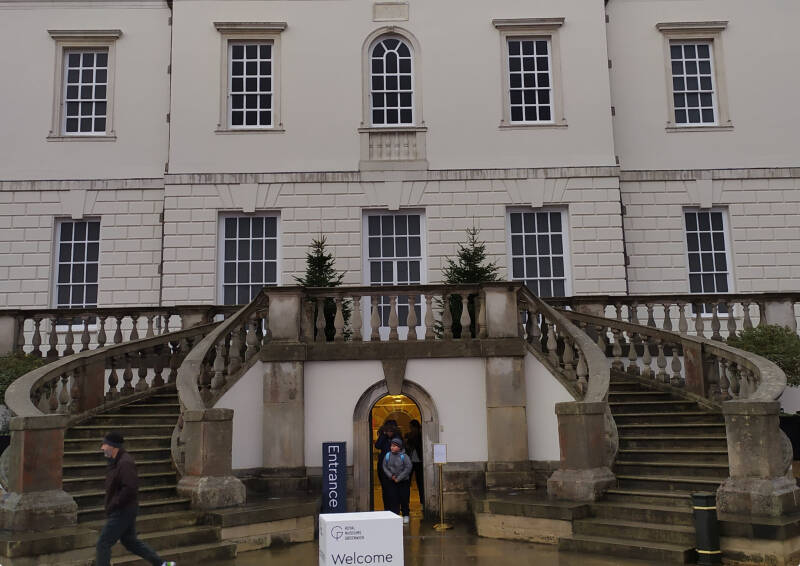
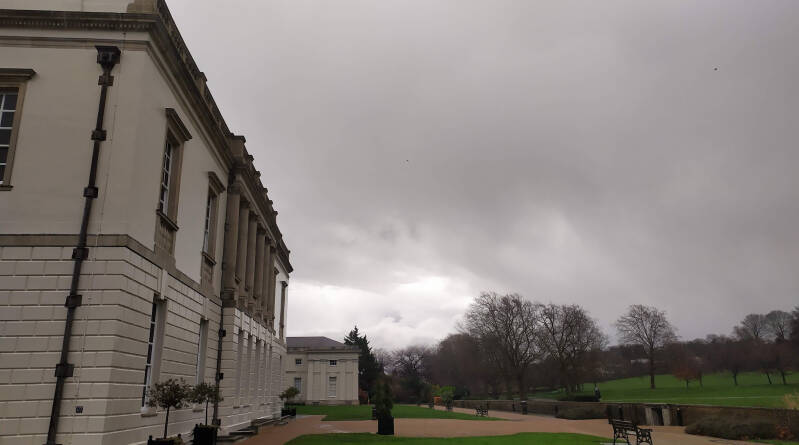
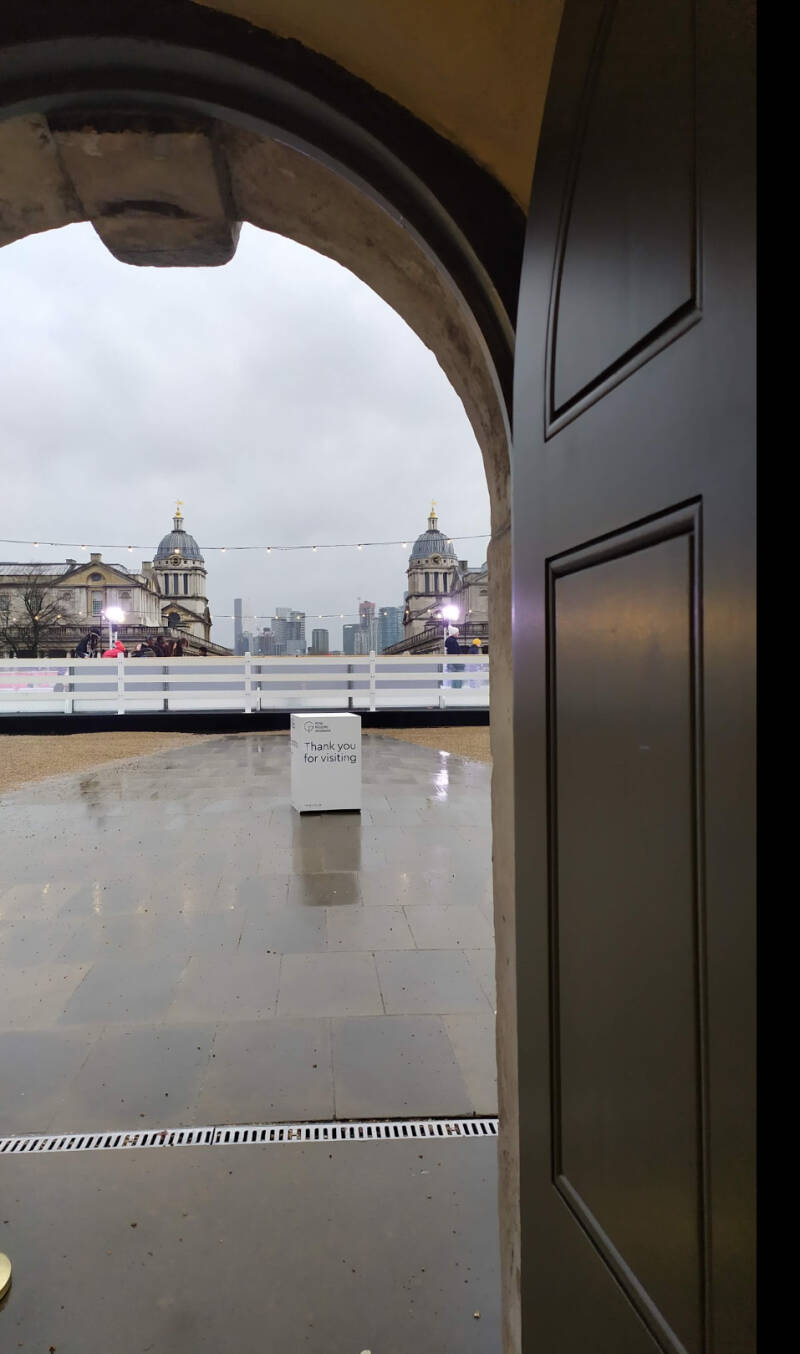
Air-raid shelters
The park was home to three air raid shelters during the Second World War, providing protection for hundreds of local residents. During the long hot summer of 2019, 26 Royal Parks volunteers and professional archaeologists discovered the main air raid shelter in front of the Queen’s House, almost entirely intact!

Why not a little detour: to PARK VISTA, MAZE HILL and VANBRUGH CASTLE, before entering the Park?
MERIDIAN LINE
THE PLUME OF FEATHERS P.H.
The QUEEN’S ORCHARD
Along Maze Hill
OLAUDAH EQUIANO lived here: the leading black campaigner for the abolition of the transatlantic slave trade
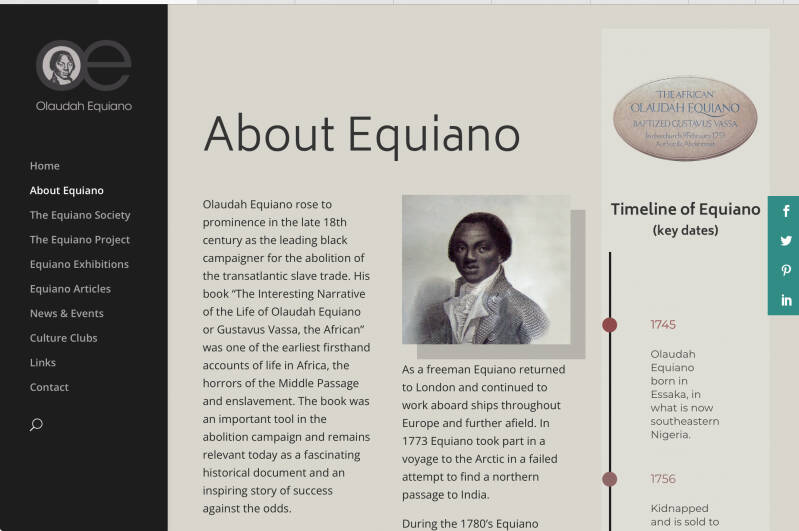
Olaudah Equiano briefly stayed in the house on Maze Hill, owned by three sisters known as the Misses Guerin, in September 1767 after he had bought his freedom and returned from the West Indies.
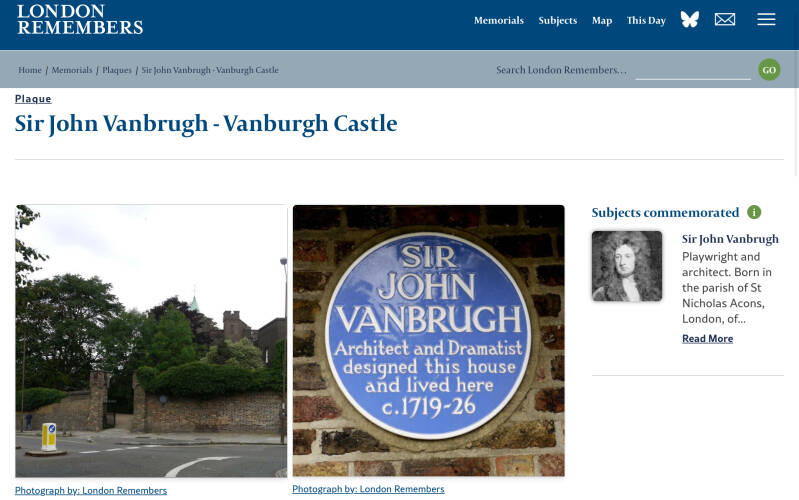
This house VANBRUGH built it for himself while Surveyor to the nearby Royal Naval Hospital in Greenwich. He lived here 1719-26. Said to be modelled on the French Bastille (which we can sort of see), where Vanbrugh was imprisoned, 1690-92, on charges of spying for the British
Site of ROMAN TEMPLE and close to the route of WATLING STREET
QUEEN ELIZABETH OAK
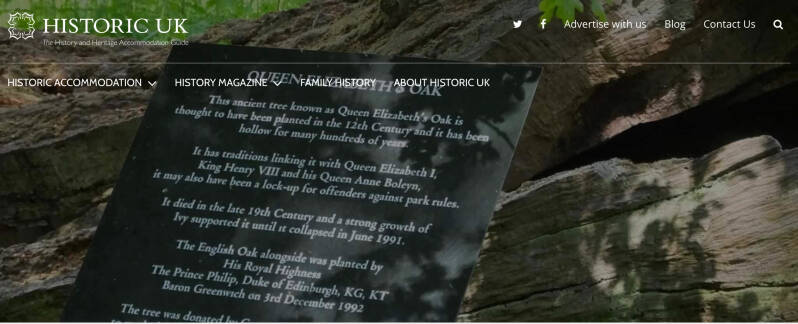

At the foot of the Roy.Obs.
GENERAL WOLFE Statue
unveiled on 5 June 1930 as a gift from the Canadian people.
General Wolfe had lived most of his life in Greenwich, with his later years spent at Macartney House overlooking the park on the west side. He joined the army at the age of 14 and rapidly ascended the ranks – becoming Major General in 1759 at the age of 32. At that time, Britain had been at war with France for five years, and Wolfe was immediately dispatched to Canada to lay siege to the French colony of Quebec.
The ROYAL PARK
In the 1660s, King Charles lI commissioned the famous Andre Le Notre, gardener to Louis XIV of France, to design a bold new landscape for Greenwich Park. Le Notre’s ‘Grand Plan’ created a formal layout of tree avenues framed by banked landscaping that can still be seen today, 350 years later.
We are currently in the midst of our own ‘Grand Plan’ to restore these extraordinary avenues and ‘parterre banks’. Discover more about the project Greenwich Park Revealed here – we welcome volunteers!

The ROYAL OBSERVATORY
WREN
Before Sir Christopher Wren designed iconic landmarks like St. Paul’s, he was a professor of astronomy at Oxford University. It was under this role that he was selected by King Charles II to establish the Royal Observatory Greenwich. Wren then chose the site at Greenwich, thus setting the stage for the Observatory's grand history.
ASTRONOMER ROYAL
As European exploration and international trade picked up, King Charles II was encouraged to establish an observatory that could aid in the understanding of astronomy and navigation. When founding the Royal Observatory Greenwich, he also created the post of Astronomer Royal.
John Flamsteed became the first person appointed to the position. There have been only 15 Astronomers Royal since Charles II created the position in the late 17th century. You can learn all about them during your visit to the Observatory.
The old churchyard, St Margaret’s Lee: the burial place of Halley, Bliss and Pond – the second, fourth and sixth Astronomers Royal
The intriguing story of how they came to be buried at Lee rather than at St Alphege’s in Greenwich in which parish the Observatory is located, leaves many questions unanswered. So too does the available information on the restoration of Halley’s tomb in 1854.
CLOCK
As the industrial world came into shape, trains, factories and global businesses could use Greenwich Mean Time as a universal measure of time, streamlining the timings of journeys, transactions and production periods across the whole planet.
IMPERIAL MEASUREMENTS. Public standards of length
The Royal Observatory Greenwich features a set of Public Standards of Length. Marked out by brass pegs, these measurements set out the exact length of different imperial measurement units, including a yard and a foot.
INTERNATIONAL MERIDIAN CONFERENCE OF WASHINGTON
The Prime Meridian was chosen by the International Meridian Conference in 1884, which was held in Washington, D.C., to establish a global standard for time and longitude.
FLAMSTEAD HOUSE
Flamsteed House is the original Royal Observatory building at Greenwich. King Charles II instructed Wren, who was also an astronomer, to design the building in 1675 and it was completed the following year.
The RED TIME BALL
A bright red Time Ball sits on top of Flamsteed House, one of the main buildings of the Observatory complex. The ball rises to the top of its mast each day, beginning its ascent at 12.55pm, before dropping at exactly 1pm.
Considered one of the earliest public time signalling devices in the world, it first dropped in 1833.
MERIDIAN LINE
How does the Royal Observatory Greenwich set the time? Well, it's most famous for being the home of the Prime Meridian. This longitudinal marker is essentially Longitude 0, it standardised time in the form of Greenwich Mean Time (GMT). This changed the game for everything from navigation to global businesses.
Standardisation was hugely beneficial when it came to mapping the night sky, with separate observation points able to be recorded in terms of their distance from the Prime Meridian. It was also incalculably useful in terms of seafaring, with distances, times and routes able to be mapped effectively because of the use of a standard longitudinal point.
The Royal Observatory Greenwich Prime Meridian facts are impressive. It literally divides the world into the western and eastern hemispheres. Every point on Earth was measured in relation to its distance east or west of the Prime Meridian.
Stand on either side of that line, and you're straddling the two halves of our planet.
EDMUND HALLEY original TOMBSTONE
CAMERA OBSCURA
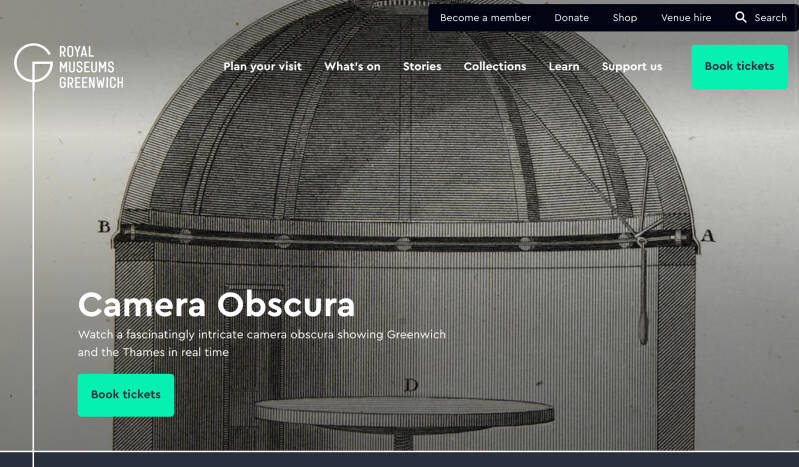
A precursor to the photographic camera, it is also known as a pinhole image. A natural optical phenomenon, it occurs when an obstructed image is displayed through a small hole. When the image is reversed and inverted onto an opposite wall, it offers the viewer a close up look at the image. This method was originally used to study eclipses, without needing to look at the sun.
PETER HARRISON PLANETARIUM: stargazing
SOUTH BUILDING
YURI GAGARIN
THANK YOU TO THE LONDON PASS https://londonpass.com/en/things-to-do/did-you-know-10-facts-about-the-royal-observatory-greenwich
THE PAVILION CAFÉ
BANDSTAND (to the SE of the café)

Along Blackheath Avenue, towards Blackheath and other destinations
Toilets
BLACKHEATH GATE
CORNISH REBELS MEMORIAL
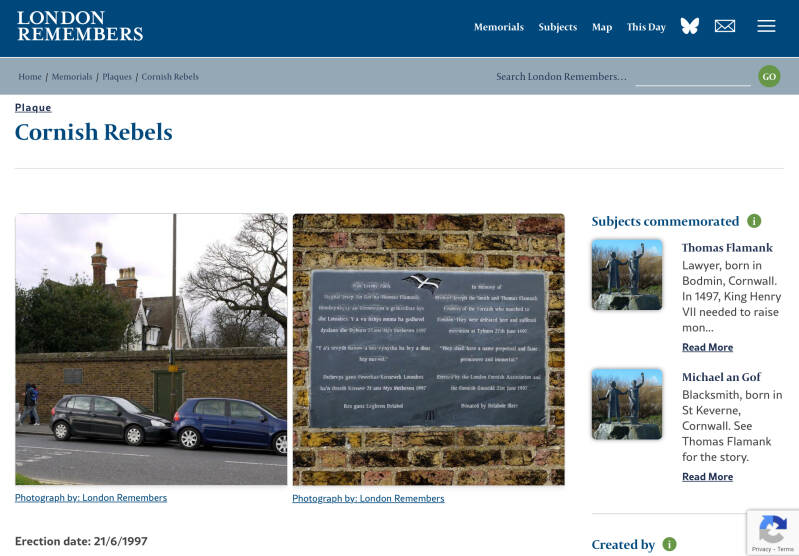
{Original Cornish:}
Rak perthy cofa, Myghal Josep an Gof ha Thomas Flamank, hembrynkysy an Gernowyon a geskerdhas bys dhe Loundres. Y a vu fethys omma ha godhevel dyalans dhe Dyburn 27 ans Mys Metheven 1497,
Y a’s tevyth hanow a bes vynytha ha bry a dhur hep merwel.
Drehevys gans Cowethas Kernewek Loundres ha’n Orseth Kernow 21 ans Mys Metheven 1997
Res gans Leghven Delabol.
{English Translation:}
In memory of Michael Joseph the smith and Thomas Flamank, leaders of the Cornish who marched to London. They were defeated here and suffered execution at Tyburn 27th June 1497.
They shall have a name perpetual and fame permanent and immortal.
Erected by the London Cornish Association and the Cornish Gorsedd 21st June 1997.
Donated by Delabole Slate.

From here, across the Blackheath (the park) to ALL SAINTS Church and Blackheath village

Still inside park, alongside the SW part of the wall
Site of MONTAGU HOUSE
QUEEN CAROLINE’S BATH
A bath beneath the paving and this wall are all that remain of Montague House the home between 1801 and 1813 of the Princess of Wales, later to become Queen Caroline, wife of George IV.
On the sequence of events the plaque is not clear. Caroline married George in 1795 and after the birth of their daughter they separated and Caroline came to live here in Montague House 1801-13. In 1814 she left Britain
IGNATIUS SANCHO MEMORIAL
Ignatius Sancho, c1729 - 1780, African man of letters, composer and opponent of slavery, born on a slave ship he was encouraged to educate himself by John 2nd Duke of Montagu and served as the butler to the Duchess (Daughter of John Churchill, 1st Duke of Marlborough) here in Montague House.
RANGER’S HOUSE
Ranger’s House is an elegant Georgian villa, now best known as the exterior of the Bridgerton home in the award-winning Netflix series.
The collection was gathered by the fabulously wealthy Sir Julius Wernher, who could buy the very best and had a passion for what he called the ‘splendidly ugly’ – tiny, unusual artworks expertly crafted in rich materials.
You’ll see nearly 700 varied works of art, including Dutch Old Masters, fine Renaissance bronzes and silver treasures, medieval and Renaissance jewellery and tapestries with scenes of Chinese life.
ROSE GARDEN
Before exiting the R.P…
ANGLO-SAXON BURIAL MOUNDS or BARROWS
Greenwich Park has been settled since Roman times, and in the south of the park you can see the traces of an ancient Roman temple, excavated in 1999. The park was also an important space for Anglo-Saxons who chose this land to bury their dead – over 30 of their distinctive circular burial mounds can still be seen to the west of the park.
HENRY MOORE artwork
Park pedestrian gate: to CROOMS HILL-GENERAL WOLFE RD./CHESTERFIELD WALK

MACARTNEY HOUSE
E2 refurbished and reconfigured the north wing of the grand Grade II Listed Macartney House, situated on the south western park wall to Greenwich Park.
Once occupied by the family of General James Wolfe, commemorated with a statue in the Royal Park, the vast Grade II building, which was previously altered by Sir John Soane, has been brought up to date.
An attractive 18th century house on the western edge of the Park, Macartney House was home to the parents of General James Wolfe (1727-1759). He was educated in Greenwich and it was from here that he left for Canada and the battle for Quebec in 1759 in which he was killed. His body was brought back and lay in the house until his burial at St Alfege Church, Greenwich.
Macartney House comprises two 17th century houses which had been combined into a single dwelling by 1717. The house was extended by architect Sir John Soane (1753-1837) for George Fulke, Baron Lyttleton, who was descended from the Macartneys of Auchinleck. The property was divided into privately owned flats in 1926-27.
Cade Road
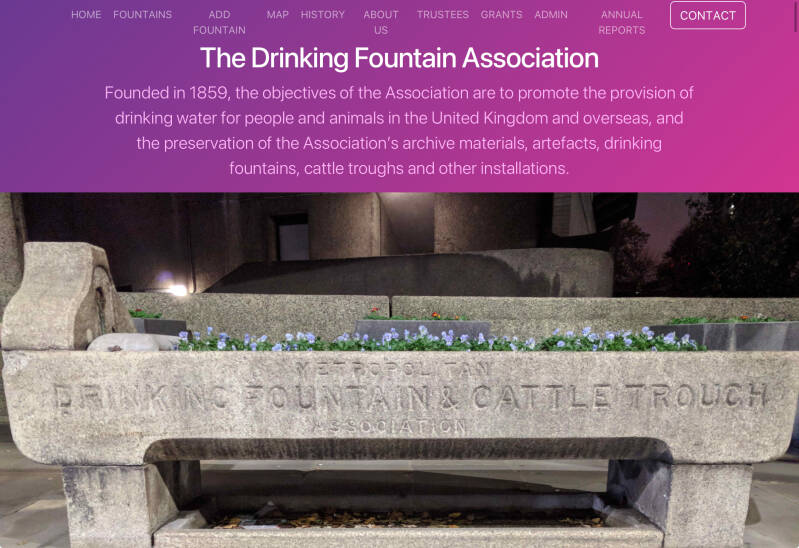
West Grove
HAMILTON HOUSE
THE DARTMOUTH ESTATE
JAMES GLAISHER
James Glaisher is the best known of Airy’s many assistants. He was a pioneer both of weather forecasting and of photography. He also held, with Henry Coxwell, the world record for the highest altitude reached in a balloon. Of independent mind, his relationship with Airy wasn’t always the smoothest. A petty admonishment over his timekeeping led directly to his resignation in 1874.
Glaisher was born in 1809 to James and Mary Glaisher of Rotherhithe, near Greenwich. Although some accounts state that his father was a watchmaker, the 1841 and 1851 censuses record him as a tailor
Church of the ANNUNCIATION
Site of HOSPITAL
Elverson Road DLR Station
The surname Elverson is a patronymic name, meaning it indicates a relationship or descent. It originates from the Middle English personal name Alfher (Old English Ælfhere) combined with the suffix "-son", signifying "son of Alfher".

Keep enjoying this guide!
Donate, help, get involved…
